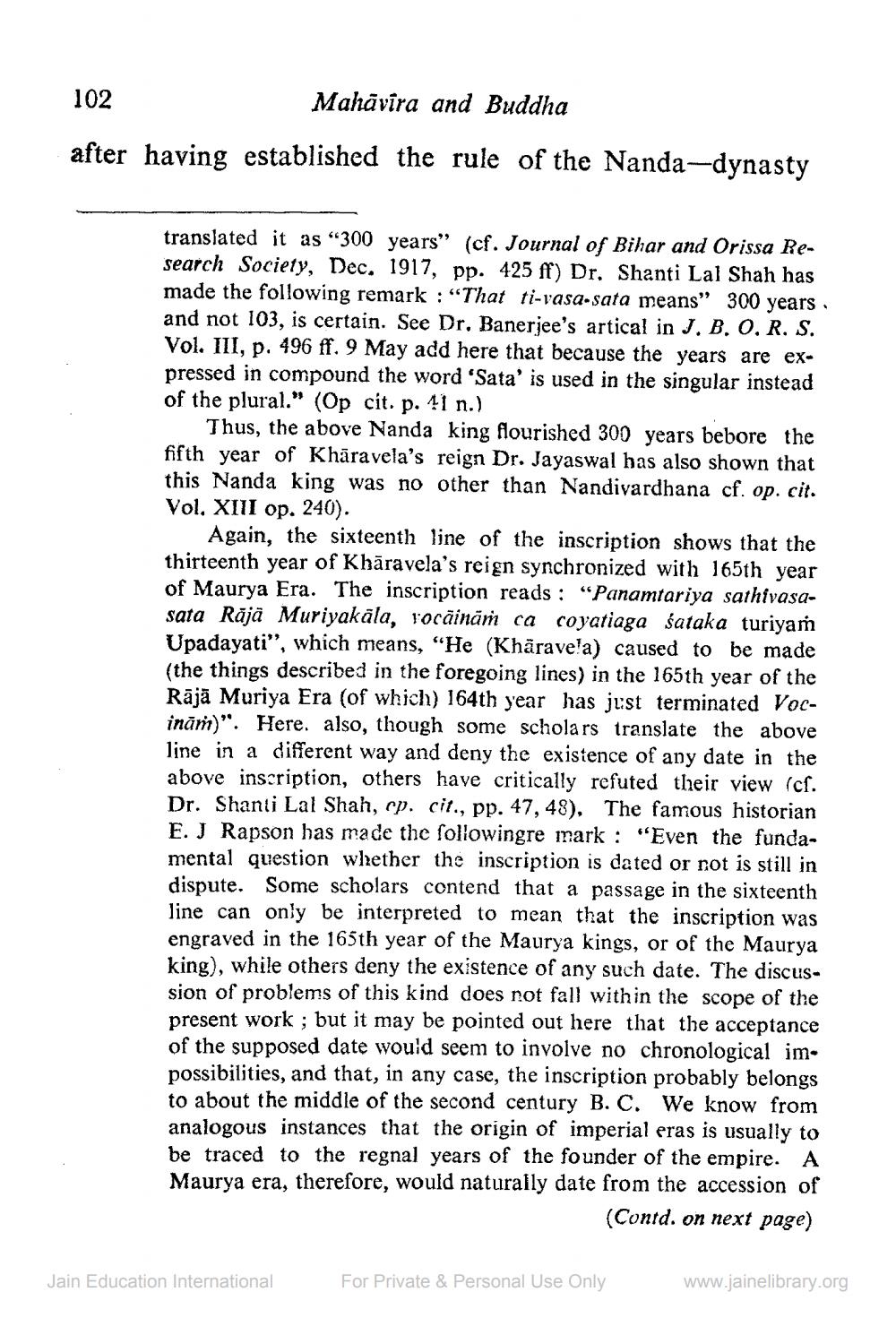________________
102
Mahāvīra and Buddha after having established the rule of the Nanda-dynasty
translated it as "300 years" (cf. Journal of Bihar and Orissa Research Society, Dec. 1917, pp. 425 ff) Dr. Shanti Lal Shah has made the following remark: “That ti-vasa-sata means" 300 years and not 103, is certain. See Dr. Banerjee's artical in J. B. O, R. S. Vol. III, p. 496 ff. 9 May add here that because the years are expressed in compound the word 'Sata' is used in the singular instead of the plural." (Op cit. p. 41 n.)
Thus, the above Nanda king flourished 300 years bebore the fifth year of Khāra vela's reign Dr. Jayaswal has also shown that this Nanda king was no other than Nandivardhana cf. op. cit. Vol. XIII op. 240).
Again, the sixteenth line of the inscription shows that the thirteenth year of Khāravela's reign synchronized with 165th year of Maurya Era. The inscription reads: "Panamtariya sathivasasata Räjä Muriyakala, rocăināṁ ca coyatiaga śataka turiyam Upadayati", which means, "He (Khāravela) caused to be made (the things described in the foregoing lines) in the 165th year of the Rājā Muriya Era (of which) 164th year has just terminated Vocinām)". Here. also, though some scholars translate the above line in a different way and deny the existence of any date in the above inscription, others have critically refuted their view (cf Dr. Shanti Lal Shah, op. cit., pp. 47, 48), The famous historian E. J Rapson has made the followingre mark : "Even the fundamental question whether the inscription is dated or not is still in dispute. Some scholars contend that a passage in the sixteenth line can only be interpreted to mean that the inscription was engraved in the 165th year of the Maurya kings, or of the Maurya king), while others deny the existence of any such date. The discussion of problems of this kind does not fall within the scope of the present work ; but it may be pointed out here that the acceptance of the supposed date would seem to involve no chronological impossibilities, and that, in any case, the inscription probably belongs to about the middle of the second century B. C. We know from analogous instances that the origin of imperial eras is usually to be traced to the regnal years of the founder of the empire. A Maurya era, therefore, would naturally date from the accession of
(Contd. on next page)
Jain Education International
For Private & Personal Use Only
www.jainelibrary.org




